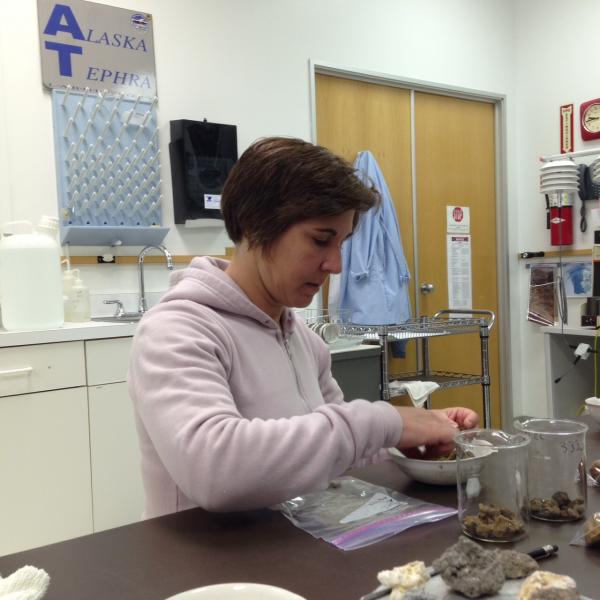New publication: Alaska Volcano Observatory geochemical database, version 2
The first release of the Alaska Volcano Observatory Geochemical Database (Cameron and others, 2014), included station and sample metadata for published Quaternary volcanic samples in Alaska and their whole-rock analytical values. Version 2 adds separate categories of data for tephra glass and groundmass glass analyses. Tephra (in this dataset, generally volcanic ash, although the definition of tephra includes all pyroclastic material) deposits can be preserved in the geologic record at both proximal and distal locations, with the deposit thickness and area dictated by the eruption size and wind directions at the time of eruption. As markers of previous explosive activity, tephra deposits provide a crucial record of prehistoric and modern eruptions. Correlating tephra deposits across Alaska and the northern hemisphere requires an understanding of their age, chemistry, and character. Such information has been reported in publications spanning numerous research disciplines over the past decades. Tephra data in particular are a key component in understanding the process, magnitude, and frequency of volcanic eruptions, and improve ashfall hazard assessments and ashfall modeling efforts. In addition, tephrostratigraphy is an integral part of linking marine, lacustrine, and terrestrial records critical to paleoclimate and archaeological research. The compilation and storage of tephra metadata and analytical data is a joint effort between the Alaska Volcano Observatory (AVO) staff at the Alaska Division of Geological & Geophysical Surveys (DGGS) and the U.S. Geological Survey Alaska Tephra Laboratory (USGS ATL).The database can be accessed from here.
Cameron, C.E., Mulliken, K.M., Crass, S.W., Schaefer, J.R., and Wallace, K.L., 2019, Alaska Volcano Observatory geochemical database, version 2: Alaska Division of Geological & Geophysical Surveys Digital Data Series 8 v. 2, 22 p., https://www.avo.alaska.edu/geochem/. http://doi.org/10.14509/30058
